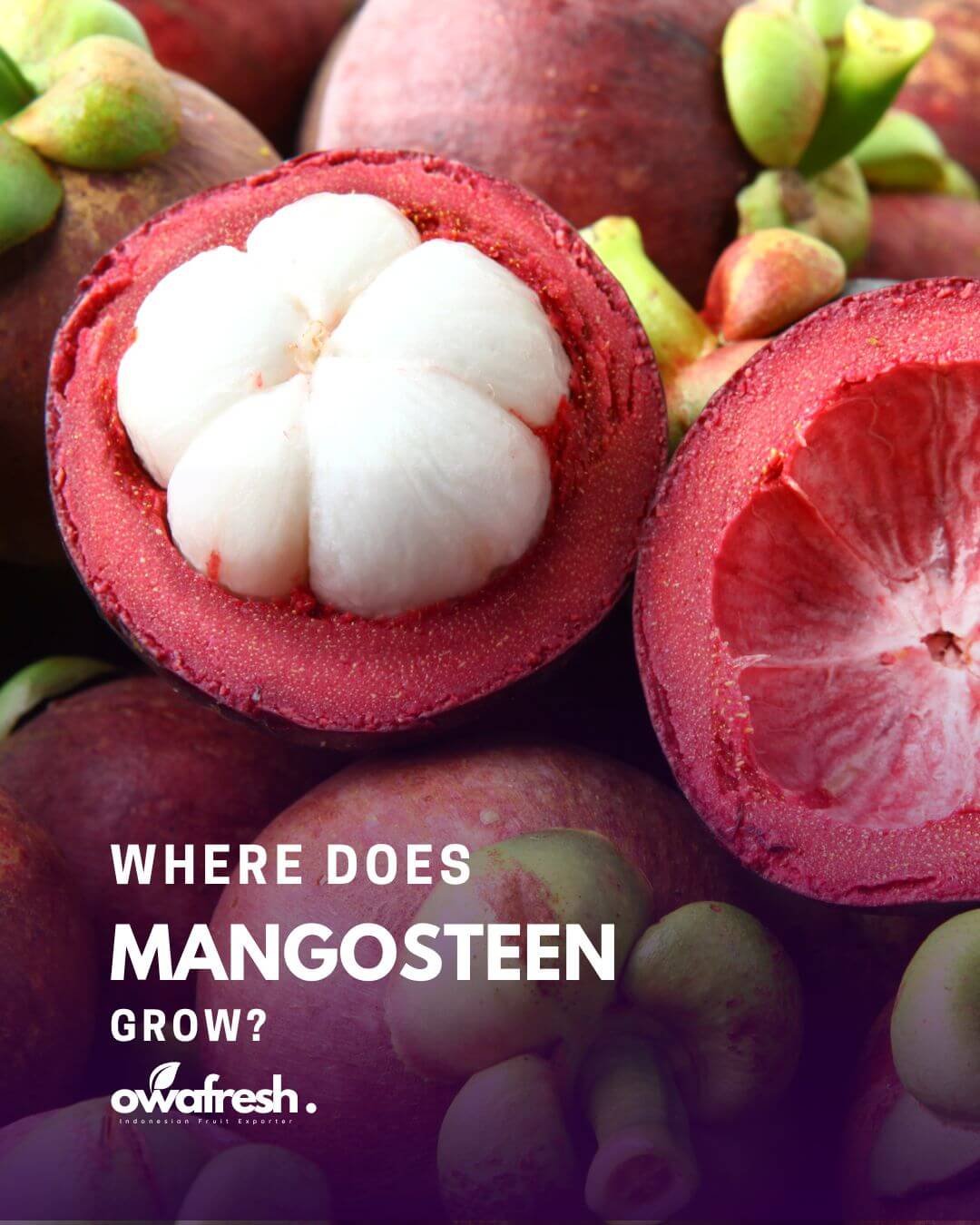
Mangosteen is a tropical fruit that grows only in regions with the right mix of warm temperatures, high humidity, and rich soil. While this fruit is widely known for its sweet taste and delicate texture, few people know exactly where mangosteen grows best and why Indonesia remains one of the world’s leading producers.
This article will take a closer look at the ideal growing conditions for mangosteen and explain why Indonesia plays such an important role in supplying fresh mangosteen to global markets.
Where Mangosteen Grows Naturally
Mangosteen naturally grows in warm, humid tropical climates. Understanding its native regions helps importers and fruit enthusiasts appreciate why this fruit thrives only in certain parts of the world.
a. Native Regions of Mangosteen
Mangosteen is believed to have originated in the rainforests of the Malay Archipelago. Today, it grows abundantly in Southeast Asian countries such as Indonesia, Thailand, Malaysia, and the Philippines.
These countries provide the perfect mix of temperature, rainfall, and soil that mangosteen trees need to flourish.
b. Climate and Soil Requirements
Mangosteen trees require a stable tropical climate with high humidity and consistent rainfall. Ideally, the temperature should remain between 25°C to 35°C. Heavy rainfall spread evenly throughout the year keeps the trees healthy.
The soil must be deep, rich, and well-drained, with good organic content. These precise conditions explain why mangosteen is challenging to cultivate outside its native region.
Where Can Mangosteen Grow Outside Its Native Area
As global interest in exotic fruits grows, farmers in other parts of the world have tried to cultivate mangosteen. But where can mangosteen grow apart from Southeast Asia, and what are the main challenges?
a. Countries Trying to Grow Mangosteen
Some farmers in tropical parts of India, Sri Lanka, and certain regions of South America have experimented with mangosteen cultivation. A few growers in Hawaii and southern parts of Florida have also attempted small-scale production for local markets. However, these efforts remain limited compared to the established production in Southeast Asia.
b. Challenges of Growing Mangosteen Abroad
Growing mangosteen outside its native zone is not easy. The trees are very sensitive to temperature changes and require high humidity levels that are hard to replicate in non-tropical climates.
Mangosteen trees also take several years to mature and bear fruit—sometimes up to 8 to 10 years—making it an investment that demands patience and expertise. Because of these challenges, consistent large-scale commercial production is rare outside Southeast Asia.
Why Indonesia Leads in Mangosteen Production
Indonesia holds a strong position in the global mangosteen market. Its natural growing regions, experienced farmers, and export-ready infrastructure make it a reliable source for buyers worldwide.
Ideal Growing Regions
Indonesia’s fertile tropical zones, such as West Java, Central Java, and East Java (including Kediri), provide excellent conditions for cultivating high-quality mangosteen. These areas have the right balance of climate, soil, and rainfall needed for healthy orchards and consistent harvests.
a. Consistent Quality and Harvest
Indonesian mangosteen is known for its thick white flesh, sweet taste, and attractive purple skin. Farmers follow traditional harvesting methods and careful handling to maintain fruit quality.
Many plantations practice selective picking, ensuring only mature fruits are exported. This attention to detail helps Indonesian mangosteen meet the quality standards required by international markets.
b. Strong Export Network
In addition to favorable natural conditions, Indonesia’s network of skilled farmers and experienced exporters ensures that buyers receive fresh, well-graded mangosteen on time. Certifications such as Phytosanitary Certificates and Country of Origin documents are standard requirements for export shipments.
This makes Indonesia a trusted partner for countries with strict import standards, such as China and Middle Eastern markets.
Why Importers Prefer Indonesian Mangosteen
Understanding where mangosteen grows is just the first step. Importers also want reliable supply and hassle-free delivery. Here is why many buyers choose to work with an experienced mangosteen supplier.
a. Reliability and Certifications
Reputable Indonesian exporters follow international quality standards, provide clear documentation, and manage all export formalities. They work closely with farmers to maintain stable supply throughout the season, even when demand peaks.
b. Mangosteen Indonesia as a Trusted Source
If you are looking for a reliable mangosteen supplier, Indonesia should be your top choice. Exporters like PT Owa Ekspor Indonesia source fresh mangosteen directly from trusted farms and ensure that the fruit meets export requirements for key markets such as China, the UAE, and Saudi Arabia.
Conclusion
Knowing where mangosteen grows and where can mangosteen grow helps buyers and importers make informed decisions when sourcing this premium fruit. Despite attempts to grow mangosteen in other regions, Southeast Asia (especially Indonesia) remains the leading source for a consistent supply and exceptional quality.
If you are planning to import fresh mangosteen, choose an experienced mangosteen supplier to ensure your customers receive the best of what Indonesia has to offer.
Read also: Mangosteen Price Per Kilo – What Importers Should Know and Understanding Mangosteen Price per Pound – Import Cost Guide


